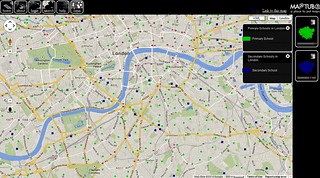Epilogue to Oil Speculation
During recent months the world has experienced something of a roller coaster on oil prices.
 Click for larger image—Note baseline is 50 |
I believe I've exhausted that subject. Since mid-June, when I last wrote about the subject, oil prices have completed a mini-spike (from a base of $122/bbl on 5 June to a peak of $147 on 11 July), and subsequently fell to levels first seen in March. At the same time, the euro has also retreated to March levels.
(The euro-denominated price of oil rose 84% as much as the price in US dollars, using 2005 as a baseline.)
However, it is probably worth noting recent disclosures about a firm called Vitol (Switzerland). Vitol's oil trades were investigated by the Commodity Futures Trading Commission (CFTC):
WP (via War & Piece): The CFTC, which learned about the nature of Vitol's activities only after making an unusual request for data from the firm, now reports that financial firms speculating for their clients or for themselves account for about 81 percent of the oil contracts on NYMEX, a far bigger share than had previously been stated by the agency. That figure may rise in coming weeks as the CFTC checks the status of other big traders.BTW, please observe the special focus from Michigan congresspersons: oil prices have been especially devastating to Usonian car manufacturers, who have lost market share to better-engineered Japanese models.
Some lawmakers have blamed these firms for the volatility of oil prices, including the tremendous run-up that peaked earlier in the summer.
"It is now evident that speculators in the energy futures markets play a much larger role than previously thought, and it is now even harder to accept the agency's laughable assertion that excessive speculation has not contributed to rising energy prices," said Rep. John D. Dingell (D-Mich.). He added that it was "difficult to comprehend how the CFTC would allow a trader" to acquire such a large oil inventory "and not scrutinize this position any sooner."
Vitol was implicated in the UN "oil-for-food" scandal associated with the sanctions regime imposed on Iraq between June 1990 and March 2003.
IHT (20 Nov '07): Prosecutors alleged that Vitol, through an associated entity or third parties, paid $13 million in kickbacks to Iraqi officials in connection with oil purchases under the program from June 2001 through September 2002, but allowed false representations to be made to the U.N. that no kickbacks were paid.While it's not obvious to me how the oil-for-food corruption is linked to illegal trades, it's hard to imagine how I can avoid mentioning it.
Vitol's case is one of several that are the result of a wide-ranging criminal probe into the oil-for-food program.
Last week, Chevron Corp. agreed to pay $30 million (€20.2 million) to settle civil and criminal charges related to secret surcharges paid by third-party merchants in exchange for oil under the program.
_______________________________________
All the same, while Vitol SA was able to briefly take a position on >11 million barrels of oil, the CFTC maintains that the real reason for the recent spike in petrol prices was supply and demand. So, while I'm aware of the Vitol story, I'm sticking to my original position.
_______________________________________
ADDITIONAL READING
David Cho, "A Few Speculators Dominate Vast Market for Oil Trading" Washington Post (21 Aug 2008)
Ann Davis , "'Speculator' in Oil Market Is Key Player in Real Sector" Wall Street Journal (20 Aug 2008)



